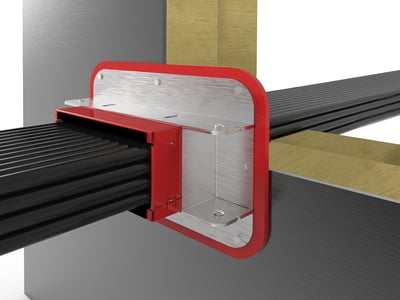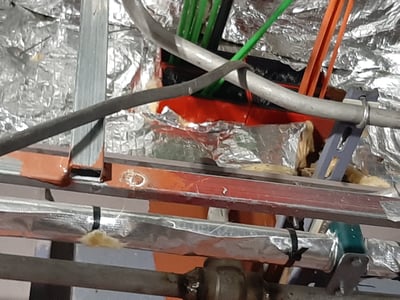Transition to Self-Sealing Cable Transits and Realize the Benefits
Cable transits or passages in fire-rated divisions are not always the first thing one thinks of in ship construction. They are obviously necessary and a SOLAS requirement, but did you know that selecting the right cable transit during ship construction can save time and money?
According to shipyards we have interviewed, approximately one in three or 33% of all cable passages are re-entered during construction to add additional cables that are either forgotten or where service requirements have changed. When sealants or cementitious compounds are used, that is a lot of extra labor to re-penetrate those seals and then completely re-install the materials to ensure the fire integrity of the division is preserved. The other concern is the risk that cutting or breaking into existing seals or passages will damage the cables.
What happens when additional services such as air handling ducts, piping, or cable trays are installed below existing passages that need to be modified? This can wreak havoc on a construction schedule and immeasurably complicate the installation process.

Obstructions are no problem with self-sealing cable transits.
What if we told you this could be avoided? There is a solution and it is readily available. Shipyards all over the globe are discovering the benefits of the self-sealing cable transit. What is it you ask? It is a factory-manufactured transit device that contains fire retardant foam pads on the top and bottom of the transit. The pads are arched and meet at a center point of contact. As a cable is inserted through the passage, the pads retract and then rebound to seal tightly against the cables. The foam pads are intumescent, meaning they will expand when heated to completely shut off the opening to resist passage of flames, hot gases, and smoke. When an additional cable needs to be installed, simply push or pull it through and it is sealed. It makes the process of adding additional cables simple and speeds up production. There is no risk of damage to the existing cabling from attempts to breach the sealing compounds.
A great example of a self-sealing cable transit is STI’s EZ-Path® MDM Cable Transit. A variety of sizes are available to accommodate different cable loads. MDM Cable Transits are subject to Type Approvals by all major Classification Agencies. While they provide a great efficiency to the ship builder, they also provide a benefit to the ship owner who can make cable changes while the vessel is at sail while still maintaining SOLAS compliance.
So, if you have not checked out self-sealing cable transits, we urge you to take a look at what they can do to help your shipyard achieve greater efficiencies and avoid costly modifications.





